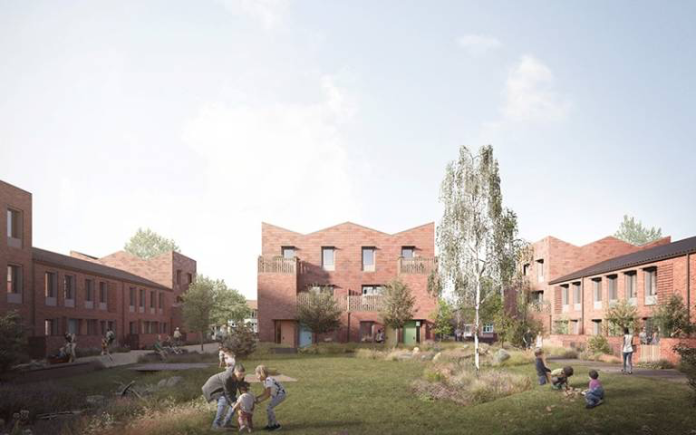Investing significantly more in social and affordable housing could save the UK government an estimated £1.5 billion a year overall by eliminating substantial costs related to homelessness, according to a new report
The report, published today, coincides with the launch of the Social and Affordable Housing Initiative, a coalition led by UCL, internationally renowned architects John McAslan + Partners and Dolphin Living affordable housing charity, to establish impactful strategies to address Britain’s housing crisis.
The coalition brings together experts from multiple sectors, including architects, engineers, public health specialists, charities, as well as the public and private sector.
The report says that reductions of costs in the areas of housing and other benefits, in health, social, homeless and criminal justice services, and in unemployment and children’s lost education, would lead to savings of £1.5 billion annually, if homelessness were reduced to a minimal level. This figure, the report says, is an under-estimate, as it does not include all the costs in these sectors, or wider beneficial impacts on economic growth, productivity and life chances.
This scale of saving is possible because the costs of homelessness in the UK, encompassing people in temporary accommodation and insecure or inadequate housing as well as rough sleepers, are an estimated £6.5 billion a year, according to the report.
The savings estimate is based on the report’s proposal that government subsidy be gradually raised up to £5 billion a year over the next five years or so (up from £1 billion currently), to enable the building of 72,000 additional social/affordable homes a year (over and above the 28,000 a year currently). By comparison there are approximately 150,000 homes built annually by private housebuilders.
Co-author Professor Rosalind Raine (UCL Applied Health Research) said:
“The housing crisis impacts on individuals, families and communities directly and indirectly. It is possible to tackle the holy grail of improving everyone’s lives, with benefits accruing the fastest for the most vulnerable. Our report does not rely on polemic but on published data. This summarises the evidence on the health and wider social impacts, the economic costs and savings, and highlights exemplars of social and affordable housing which can feasibly be scaled nationally.”
The report also spells out how its social and affordable housing targets could be met and highlights recent successful examples of affordable and sustainable housing that could be scaled nationally.
It argues that new housing should be a mix of social-rent housing, partially discounted affordable housing, and dwellings to be sold or rented at full market value, both to subsidise the costs of the social housing and to prevent ghettoisation. It notes that the bulk of new social and affordable dwellings would need to be provided by local authorities.







